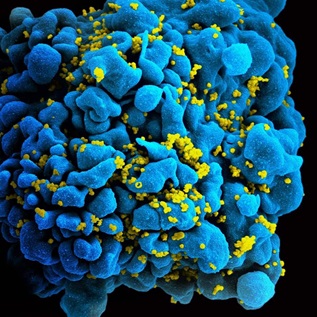Neighborhoods Benefit From Community-Led Efforts to Transform Vacant Lots
New Philadelphia partnership helps residents create new, accessible green spaces

Vacant lots—generally urban land that is not being used—can have negative implications for community health and safety. Researchers consider abandoned properties a sign of neighborhood distress, and, in combination with related challenges, evidence suggests that nearby residents are more likely to experience higher rates of violence and chronic illness than the broader population. They also may see stunted brain and physical development in children, unhealthy eating and exercise habits, and a breakdown of social networks and capital. A 2016 inventory of vacant lots nationwide found that on average, 16.7% of land area in large cities with populations of 100,000 or more is considered vacant.
In turn, redeveloping these lots can have a positive impact on the housing market, create economic opportunities, enhance public safety, and increase green space, all of which contribute to improved physical and mental health outcomes. Community engagement is key to this process because local organizations and individuals are often best positioned to understand the problems and potential of vacant properties. In addition, the act of bringing together diverse groups and organizations even temporarily—especially across sector boundaries—has shown promise in solving the problem of persistently vacant lots.
Philadelphia and other cities are experimenting with strategies to make this happen more routinely. And their successes should help advance health equity, the guiding principle that disparities in health outcomes caused by factors such as race, income, or geography should be addressed and prevented, providing opportunities for all people to be as healthy as possible.
Case studies point to the benefits of resident-led efforts in boosting interpersonal relationships, mental health, and community pride. In Chicago, University of Illinois-run focus groups with property owners who had been given the chance to purchase and revitalize vacant lots indicated that leading beautification activities such as cleaning and planting made them feel more confident in those efforts and strengthened bonds with neighbors. Elsewhere, a randomized sample of people in Philadelphia found that self-reported feelings of depression and worthlessness significantly decreased when residents engaged in “greening” of blighted physical environments, including efforts at trash removal, land grading, planting, and regular maintenance. That was particularly the case in underserved communities in urban settings. Finally, a Boston focus group said that the city’s neighborhood-driven redevelopment of vacant lots allowed residents to connect with the local plants, animals, and environment—an important factor in the sustainability and stewardship of revitalized vacant lots.
However, in a national study, residents and community stakeholders often cited regulatory issues as among the biggest barriers to community efforts to transform vacant lots. To overcome those challenges, experts recommend that people seeking to engage in this process cultivate liaisons with city employees who can help navigate local systems, set realistic expectations, and adapt to or work around regulations.
Transforming lots in Philadelphia
As in many cities, not all Philadelphia residents have equitable access to outdoor gathering places or green space. The importance of such access became especially clear during the COVID-19 pandemic. Research shows that under-resourced neighborhoods and communities of color most frequently bear the burden of poorer health outcomes associated with that low access.
In response, the Landscape Architecture Program at Philadelphia’s Thomas Jefferson University (TJU) has worked with the Citizens Planning Institute (CPI) within the city planning commission to create two sets of tools that can build capacity among residents to transform vacant lots into neighborhood parks and to advance health equity.
“Park in a Truck” is a do-it-yourself toolkit, created by TJU, that helps communities design, build, and maintain parks on empty lots in their neighborhoods. The toolkit, crafted like an instruction manual, allows residents to analyze the site and design one or more features—such as fruit and vegetable gardens, communal eating and activity spaces, performance areas, or nature-based playgrounds—based on community need. Residents serving as citizen planners—neighborhood leaders trained by the city—can use the resource to increase equitable access to green space within a 10-minute walk by transforming vacant lots, particularly in neighborhoods that have historically had limited access to parks. This toolkit also enables residents and communities to be part of a network of park “builders” while advocating for more access to green space in Philadelphia.
“CPI in a Box,” meanwhile, contains tools to support the newly trained neighborhood leaders in implementing planning-related solutions in their neighborhoods. This set of resources, co-created with an advisory group of citizen planners that tested the “Park in a Truck” toolkit, contains guidance for processes such as acquiring, purchasing, insuring, and other procedures essential to redeveloping vacant lots. The partnership also produced a revamped website for CPI to make access to city materials more user-friendly, a plan for toolkit distribution and stewardship among Philadelphia residents, and the coordination of a class for current CPI students and alumni about the “Park in a Truck” toolkit to build capacity for redeveloping vacant lots in communities.
To support these efforts, the Center for Community Progress (CCP), a national nonprofit with deep expertise in the policies, tools, and resources needed to address vacant property revitalization, engaged with local partners in Philadelphia. CCP reviewed the “Park in a Truck” toolkit, providing specific recommendations to ensure its accessibility to target audiences. Staff also met with Philadelphia community groups working to reactivate vacant lots to gain a deeper understanding of the local context and ensure that CCP recommendations supported efforts within that context.
The center also generated two fact sheets, Greening and Community Health and Greening and Community Safety, that summarize recent research on vacant lot stewardship and its relationship to health and community safety. Finally, the grant enabled CCP to expand its collection of project examples on its Vacant Land Stewardship Online Resource Center and work on generating a new “elements database,” now in development. The database will serve as a collection of real-world examples of components such as the contexts, plans, collaborations, and policies needed to implement comprehensive, citywide vacant land stewardship.
The work done by these partners will not only have a positive impact on Philadelphia neighborhoods and resident access to green space, but it will also help provide important insights and guidelines that can be used by large cities nationwide seeking to revitalize vacant lots.
Mimi Majumdar Narayan works on The Pew Charitable Trusts’ Health Impact Project.












